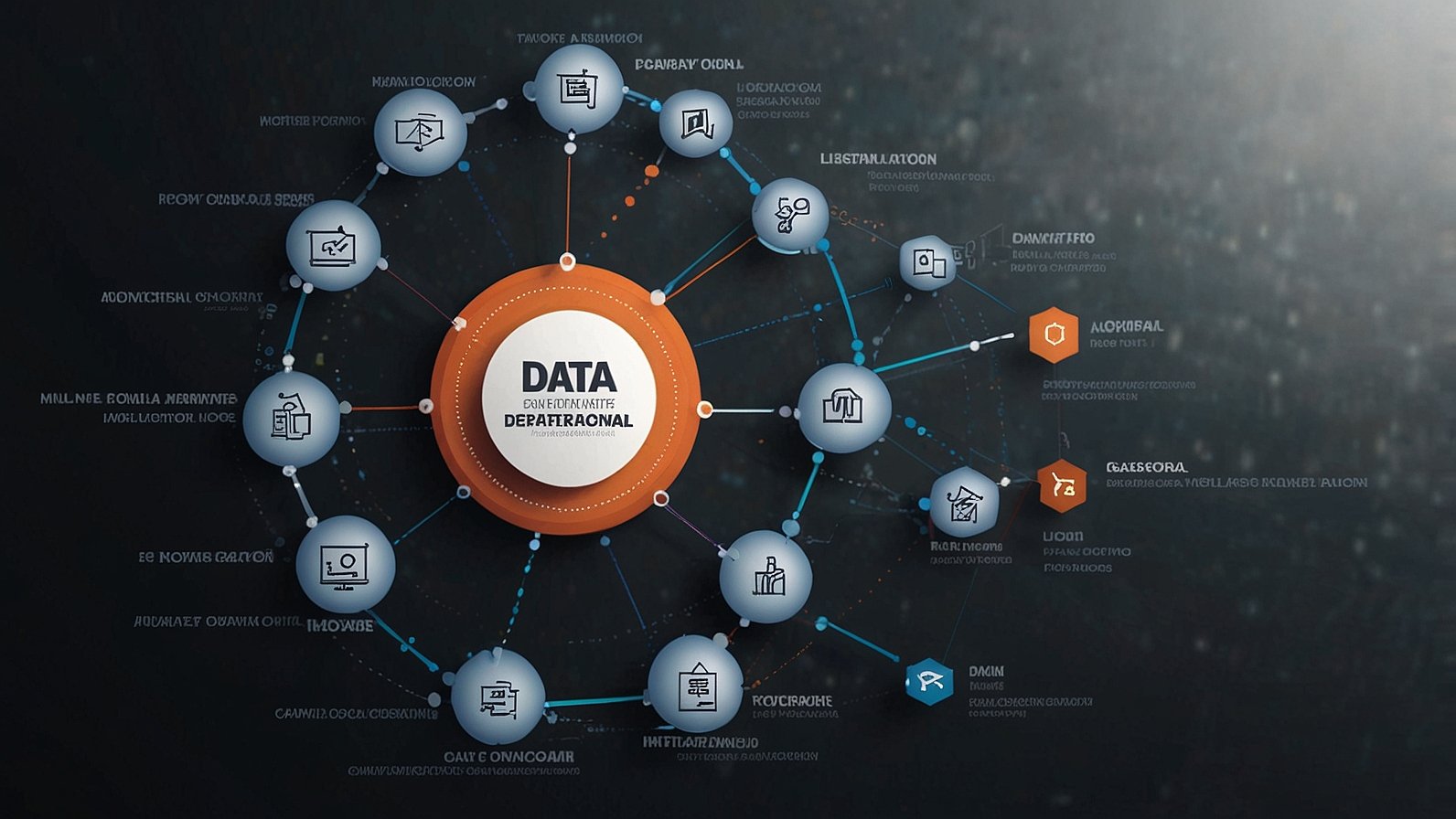Imagine it’s the last day of the quarter. The finance team is buried in spreadsheets, frantically emailing department heads for final numbers, and manually keying data from a dozen different systems. A single typo could mean days of rework, missed deadlines, and reports that decision-makers can’t fully trust. This stressful, error-prone ritual is the reality for many organizations. But what if you could press a button and have all that data collected, validated, and consolidated automatically?
This isn’t a futuristic dream. It’s the practical reality delivered by an eo pis (Enterprise Operational Performance & Intelligence System). In an era drowning in data but starving for insight, this structured framework is the back-office hero that ensures the numbers telling your business story are not only timely but bulletproof.
Introduction to Eo Pis: Your Financial Air Traffic Control
Think of an eo pis as the air traffic control system for your company’s operational and financial data. Just as a controller ensures planes land and take off safely, on time, and on the correct runway, an eo pis guides data from various sources—sales platforms, ERP systems, CRM databases, spreadsheets—and ensures it lands accurately in your reports without collisions or delays.
At its core, an eo pis is an automated framework designed for one critical mission: to handle the heavy lifting of the period-end close. It collects data from across the enterprise, validates it against predefined rules, consolidates it, and prepares it for reporting. The result? Finance teams shift from data wranglers to strategic analysts, and leaders get the clear, auditable information they need to steer the company confidently.
How Does an Eo Pis Actually Work? The Mechanics Behind the Magic
The process isn’t magic, but it is intelligent automation. It follows a meticulous, repeatable sequence that eliminates manual chaos.
The Four-Stage Workflow
- Data Collection & Ingestion: This is the starting point. The system connects to all your data sources—whether they’re cloud-based APIs, legacy databases, or even emailed spreadsheets—and pulls in the raw operational and financial information needed for the close. It speaks the language of every department, gathering everything from sales figures to logistics costs.
- Validation & Reconciliation: Here’s where the “intelligence” kicks in. The system doesn’t just collect data; it checks it. Automated validation rules scan for anomalies, outliers, or entries that don’t match across systems. Think of it like a spellcheck for your numbers, flagging discrepancies for review before they can corrupt the final report. This step is what builds auditability right into the process.
- Consolidation & Transformation: Raw data from different systems often looks different. This stage is the great unifier. The eo pis translates all this data into a common format, applying currency conversions, allocating costs, and rolling up figures from subsidiaries or departments into a single, coherent dataset. It’s the equivalent of compiling a master guest list from several individual invitations.
- Reporting & Distribution: With clean, consolidated data ready to go, the system automatically generates pre-formatted reports. These can be standard financial statements, custom operational dashboards for managers, or specific documents for regulatory bodies. These reports are then distributed to stakeholders on a set schedule, often with a single click.
The Tangible Benefits: Why Modern Businesses Can’t Afford Manual Closes
Moving to an automated system isn’t just about saving a few hours; it’s a strategic upgrade that impacts the entire organization.
- Dramatically Reduced Manual Effort: Automating repetitive data entry and collection tasks free your finance team to focus on high-value analysis, forecasting, and supporting strategic decisions rather than chasing down numbers.
- Unmatched Accuracy and Reliability: By minimizing human touchpoints, you drastically reduce the risk of errors. Automated validation ensures that the data you report is consistent and correct, building trust across the organization.
- Significantly Faster Reporting Speed: What used to take weeks can now take days or even hours. This speed means decision-makers have access to critical information sooner, allowing them to respond to market conditions with agility.
- Iron-Clad Compliance and Audit Support: An eo pis creates a clear, transparent audit trail. Every data point’s journey is logged, making it incredibly easy to satisfy internal and external auditors and demonstrate compliance with regulations like SOX, GDPR, or IFRS.
Real-World Applications: The Eo Pis in Action
This isn’t just theoretical. Industries with complex data landscapes benefit immensely.
- Retail: Consolidating daily sales from hundreds of online and brick-and-mortar stores, validating inventory data, and producing daily profitability reports.
- Healthcare: Aggregating patient billing, operational costs, and resource utilization data from different clinics and systems to report on operational performance and compliance.
- Manufacturing: Pulling data from ERP and supply chain systems to validate cost of goods sold (COGS), reconcile inventory, and report on production efficiency across global plants.
Key Points to Remember and Your Next Steps
An eo pis is the foundational layer for modern, efficient, and trustworthy reporting. It turns the chaotic, stressful period-end close into a smooth, controlled, and valuable process.
What will you try first? Start by auditing your current close process. Map out all your data sources and identify the biggest pain points—perhaps it’s manual spreadsheet consolidation or a recurring error in inter-company reconciliations. This will help you build a compelling case for implementing a more structured, automated solution.
Your journey to a faster, more accurate financial close begins with understanding the power of the system designed to make it happen.
You May Also Read: 5starsstocks.com Buy Now: Your Research Hub, Not Your Financial Adviser
FAQs
Is an eo pis the same as an ERP system?
No, they are complementary. An ERP (like SAP or Oracle) is a transactional system where business operations are recorded. An eo pis sits on top, pulling data from the ERP and other systems to aggregate, validate, and report on it, especially for period-end closes.
How does an eo pis improve auditability?
It provides a complete digital trail. Every piece of data has a source, every adjustment has a reason logged, and every validation rule is documented. This transparency allows auditors to easily trace any number back to its origin, significantly streamlining the audit process.
Can small businesses benefit from an eo pis, or is it just for enterprises?
While large enterprises have more complex needs, the core principles—reducing manual work and improving data accuracy—benefit businesses of almost any size. Many modern software solutions offer scalable, affordable options that bring these automation capabilities to smaller teams.
What’s the biggest misconception about implementing an eo pis?
That it’s purely an IT project. While technology is key, success depends on collaboration between finance, operations, and IT to define the right processes, data rules, and reporting needs. It’s a business transformation initiative.
How long does it typically take to see a return on investment (ROI)?
ROI is often realized quickly, sometimes within the first few reporting cycles. The savings come from reduced overtime, fewer errors needing correction, and the recovered time for finance staff to engage in more valuable analytical work.
Does an eo pis require deep technical knowledge to use?
Modern platforms are designed with the finance user in mind. While initial setup requires technical integration, the ongoing operation—running validation checks, monitoring the process, generating reports—is typically managed through a user-friendly interface without needing coding skills.
Can it handle data from legacy systems or spreadsheets?
A robust eo pis is designed to work in heterogeneous environments. It can connect to modern APIs, query legacy databases, and even parse data from formatted spreadsheets and PDFs, making it adaptable to almost any IT infrastructure.










